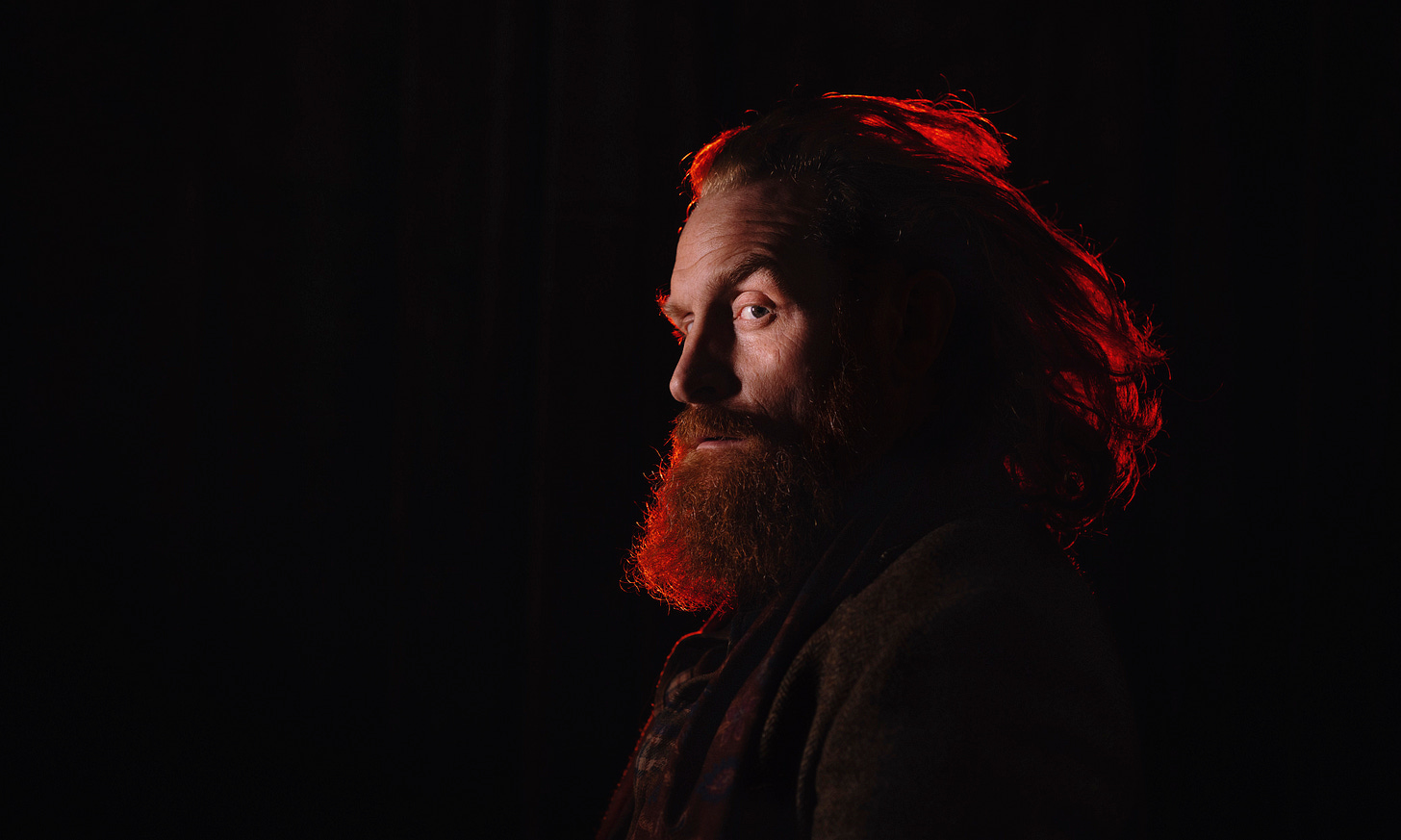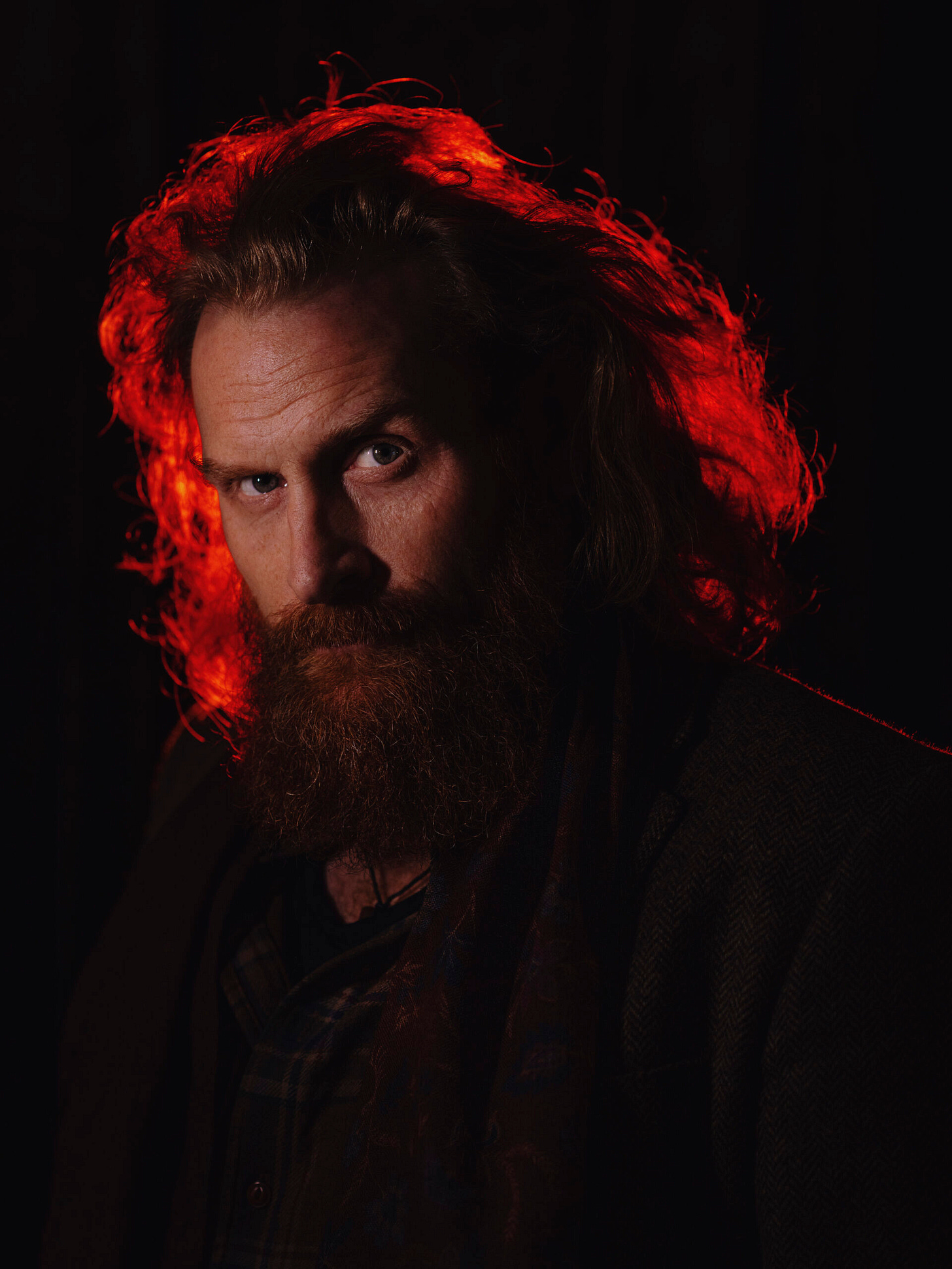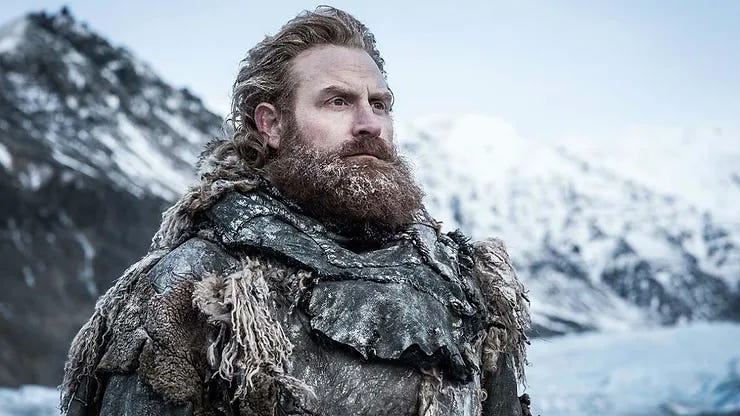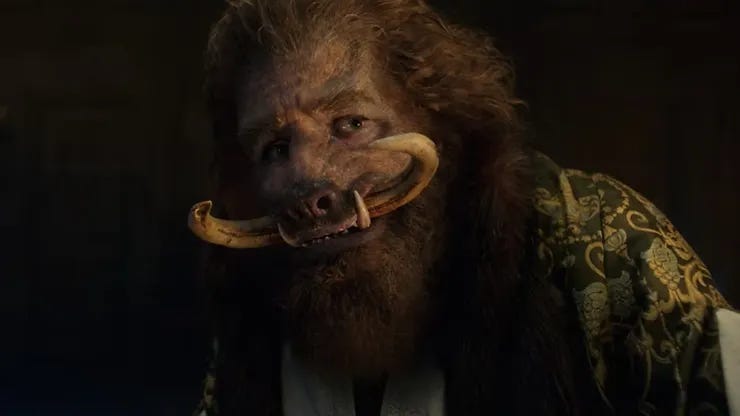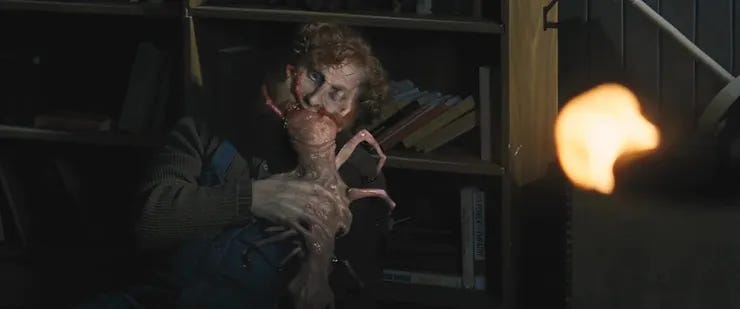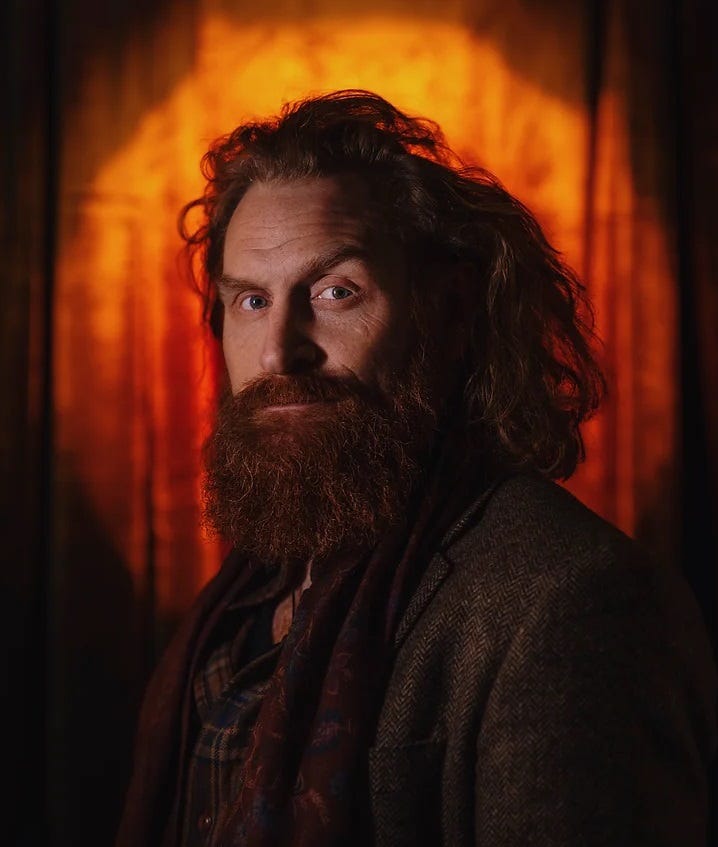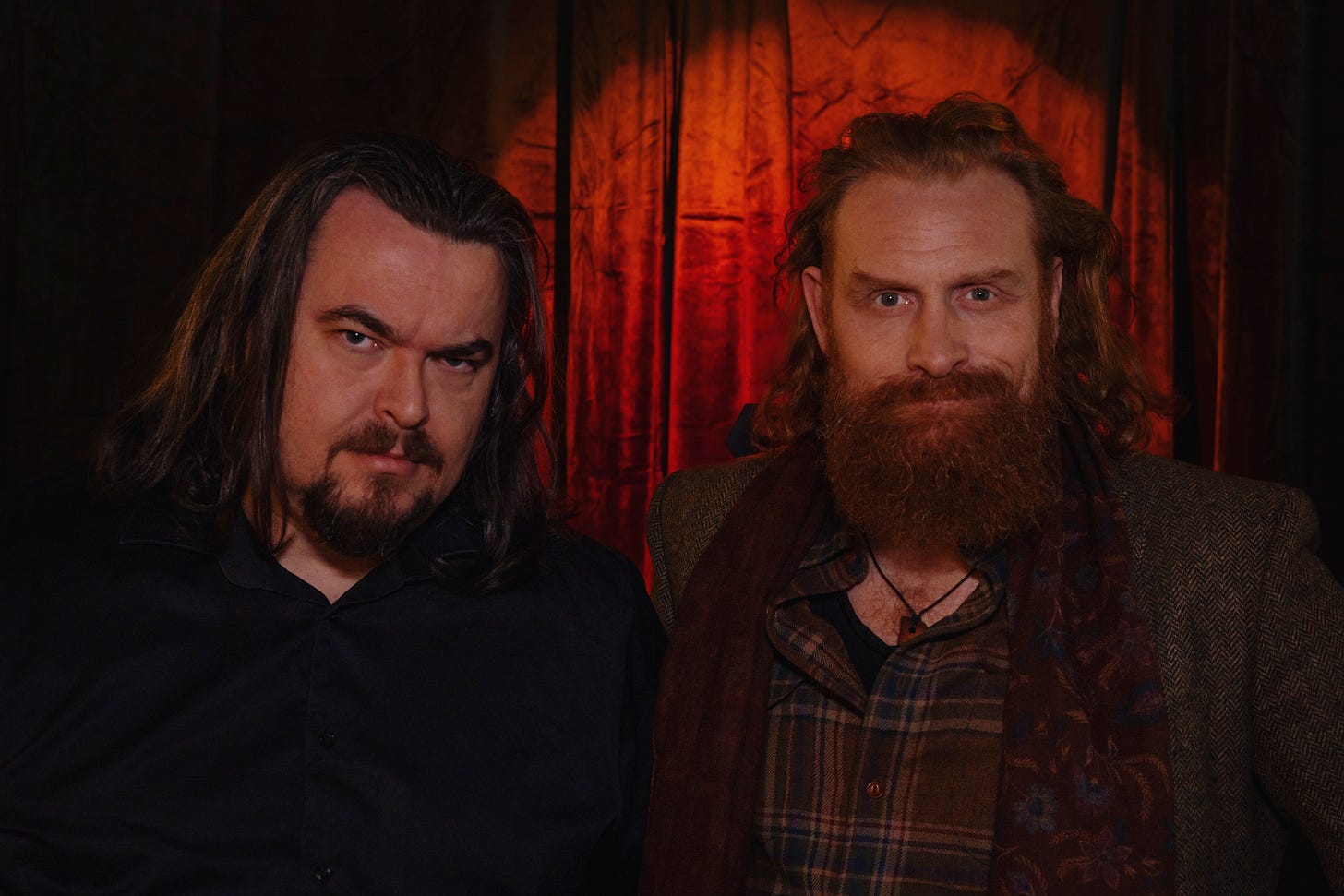Of Myths and Monsters - A Conversation with Kristofer Hivju
Revisiting a conversation with the beloved wildling about his journey through 'Game of Thrones,' 'The Witcher,' and the monsters that shaped his career
You might know him as the wildling Tormund Giantsbane in Game of Thrones, or perhaps the unorthodox detective Steinar in the Swedish crime drama Beck. Norwegian actor Kristofer Hivju has brought his particular brand of Nordic intensity to numerous international roles, and he’s not slowing down. It was recently announced that Hivju will star alongside Tom Holland and Niamh Algar in The Iris Affair, a new international thriller from Neil Cross, the celebrated creator of Luther.
This exciting news sent me back into my archives to an in-depth conversation I had with Hivju back in 2021. As he prepares for this major new project, his insights into his craft, his approach to iconic characters, and his career on the international stage feel more relevant than ever.
The original interview was a personal milestone for me—my first face-to-face in an age of video meetings, conducted at Oslo’s Ekeberg Café. I was particularly interested in exploring his work in fantasy and science fiction, from Game of Thrones and The Witcher to the hilarious and bloody Cocaine Bear. Revisiting that conversation now offers a fascinating look at the foundations of an actor continually making his mark.
Viking Inspiration
Born into an acting dynasty—his parents and grandmother were both in the business—one might assume Kristofer was destined for the stage. But he explains that for the longest time, his passion was elsewhere. “I just wanted to start playing music,” he says, “so it was a coincidence that I discovered I had a talent for acting... it wasn’t something I wanted to do until I was around 17, I guess.”
His interest in Nordic stories began with an early role as a farm boy in Stiklestadspelet, a traditional Norwegian play about the life of King Olav Haraldsson. While other kids had cartoons, Hivju found his superheroes in the Icelandic sagas. He carried these tales into adulthood, where they became a driving force in his work and formed a foundation for characters like Tormund Giantsbane.
But after embodying so many characters in that vein, is he looking to move away from the Viking-like narratives? Hivju admits he’s reached a “saturation point.” “It’s going to be a while before I can play something like that again,” he says, but quickly adds, “I’ve had a lot of fun doing so!”
His passion for Norse culture hasn’t lessened, however. As he made a name for himself internationally, he began to lament what he sees as Norwegians’ lack of pride in their own Viking history compared to their neighbors.
Says Kristofer: “In Iceland, for example, you will often hear stuff like, ‘We are the REAL Vikings!’ But here in Norway, at some point, it became something we didn’t want to talk about anymore, something politically incorrect, like we didn’t want to identify with ‘those barbarians.’”
He sees this cultural pride roar back to life in grassroots movements, especially when official support for the arts is threatened. He elaborates:
“In Norway, when institutions close down and state funding no longer goes into backing our culture, the whole country explodes! Then they make plays about our cultural heritage and icons like Haraldsson, Tryggvason, and Fairhair, telling tales about our cultural heritage. Those are the tales people want to tell when no one controls anything... Then they gather in every community, in every little town, and on every hill and mountain top to compose, create, and play! That tells us something about Norway.”
Playing the Game of Thrones
Kristofer’s breakthrough to the international film industry was as the wildling Tormund Giantsbane on Game of Thrones. Entering in the third season of the hit show, Kristofer’s character would stay until the end, appearing in 33 episodes, avoiding the death and dismemberment that the show was known for and becoming a favorite in the Game of Thrones fandom. Having watched every episode of the hit fantasy series, I was curious about how it felt taking on such a major production and about his best memories from those years.
Says Kristofer: “It was a kind of flow zone that lasted eight years for most of the people involved. In a way, making something that is really good is very difficult because you plan for one thing, shoot a different thing, and when it comes to editing, it becomes something else again. It is a collaborative project that relies on all links in the chain, working together to make it so that the creators’ visions and dreams somehow end up on the screen.
My point is that it was a flow zone of great work ethics, enormous ambitions, and lots of job satisfaction at every stage of the production. It got crazier and crazier with each passing year, and the budgets only went up and up, and you had night shoots and massive battles one after another.
When I got there in the third season of the show, it had already become a hit, and that ‘hit factor’ was going to increase. It gave us confidence that, in turn, gave us the power and drive on and keep at it. Overall, the satisfaction of working on something like that is my best memory.”
Game of Thrones would have a major impact on Kristofer’s career. His name became known worldwide, and his character became a fan favorite—Tormund Giantsbane’s obsession with the knight Brienne of Tarth (played by Gwendoline Christie) has inspired countless memes and fanfiction.
He reflects on being part of such a phenomenon: “You can be a part of a lot, and then all of a sudden, you’re in something that’s so iconic and that had such an insanely large audience. My desire has always been to entertain and inspire people, and in a show like that, you managed to excite them to such an enormous extent. As an actor, you leave a lasting impression on the audience. It’s fascinating to note that people are still very tied to that universe, even though it’s been three years since the show ended.
For instance, when I was at Comic-Con a few years back, I met Christopher Lloyd, that crazy professor from Back to the Future. I became star-struck because these films were so important to me and had a significant impact on me as a kid. For me, it was a kind of magical world, but he was just some dude who made these movies long ago. Yet they are attached to him, and he has become the icon of these movies.”
It doesn’t seem like Kristofer will be rid of his connection with Tormund Giantsbane anytime soon. And he is perfectly fine with that.
Coins to The Witcher
Hivju also made a memorable appearance in the second season of Netflix’s hit fantasy series The Witcher. Although he was only in the first episode, “A Grain of Truth,” his character Nivellen made a significant impact. No wonder, as the tragic and magically cursed nobleman is a favorite for many in The Witcher fandom.
His initial approach to the character came from an interesting misunderstanding.
Says Kristofer: “I was introduced to The Witcher before Netflix released the first season. I had little knowledge of it, and I understood it was a game, so that reference was there. But I approached it in an isolated way based only on the bits of text I received beforehand. When I first approached and analyzed the character of Nivellen, it was as if he was a human. When I read the first episode, I might have done so a bit too quickly, as I didn’t get that important fact at the beginning. When I met show creator Lauren Schmidt, I realized that he was a half-boar! But I had already attached myself to the character without realizing all the other things, and I’m glad I did. It let me start with his humanity.”
Once he understood the full scope of the role, Hivju dove deep into the existing lore and fandom to prepare.
“Then began the discussions about how to portray him,” he explains. “I found loads of fan art and drawings. People talked about him and had him as their favorite character in The Witcher universe. With fantasy, one can read books, play games and visit online communities where people discuss and create their own stories. My point is that there is much passion for these worlds, and when I went deeper into it, we discussed how to create the character based on this.”
Fantasy and special effects nerd that I am, I had to ask about the amazing practical effects that went into creating Nivellen. Hivju explained that the goal was always to use prosthetics rather than CGI, drawing inspiration from classic stories but aiming for something much darker.
“You can’t ignore The Beauty and the Beast, for example,” he says. “The author of The Witcher, Andrzej Sapkowski, shamelessly borrows from ancient myths, legends and stories and incorporates them into something new. It should be said that our story is far darker than Beauty and the Beast, to be sure.”
The technical process was incredibly detailed, requiring a full body cast to create a custom-fitted suit. But the real challenge was capturing a nuanced performance from within the complex mask.
Kristofer describes the process: “I had a tiny hole in the mask and a camera so I could see my surroundings at all times and look out through Nivellen’s snout. I also wore a bunch of tiny dots on my face to capture my expressions inside the mask, and they have incredibly detailed footage of everything I do. They spent enormous resources doing this because Nivellen is such an emotional character; he is not just a beast that shouts and screams.
The director, Stephen Surjik, was very concerned about this and wanted the character to be as authentic as possible. A face consists of 350 muscles, and you can express joy and shame in the same smile. There are so many expressions, and if they had become one-dimensional, as is always the danger with a character like this, he wouldn’t have the same emotional impact. So it became the mission of everyone involved to get my performance inside the mask to come alive on the outside of the mask itself. I was delighted with the result.”
The Thing about The Thing
In the 2011 prequel to John Carpenter’s horror masterpiece, The Thing, Hivju played Jonas, one of the Norwegian arctic researchers. The role marked his first foray into a major international film production and put him at the center of a classic debate among sci-fi fans: practical effects vs. CGI. Rumors have long swirled that the film’s practical effects were largely replaced by computer-generated ones. I asked Kristofer to set the record straight.
He begins by describing his reverence for the original: “The Thing had a major impression on me as a kid and is one of my first really significant movie memories. For me to be a part of this universe was a magical experience. It was my first proper film role, as I basically came straight from the theatre stage at that point. I really got to geek out going into it. Several people on that shoot were actually involved in John Carpenter’s original production, and all of us were big fans. It’s important to mention again that our film is a prequel, not a remake. It’s a homage, and it’s really fun to watch it back-to-back with the 80s one.”
Regarding the effects, Hivju confirms the initial plan was to lean heavily on practicals, but the reality of modern filmmaking required a hybrid approach.
“The original idea was to create as much as possible with practical special effects, and there is still a lot of that left,” he explains. “But the requirements for effects only increase over time. So even if we had a lot of stuff controlled by remote controls—we had four guys with their own RC controller moving various things—it supplied the base to be enhanced later with CGI. For example, I had that hand-thing on my face in a scene, which was a practical effect. I had a lot of fun with it! It was a kind of film education for me right there.”
The endless fan debates about “who gets turned when” aren’t just for the audience; Hivju says those same conversations happened on set among the cast.
Says Kristofer: “We had the same kind of discussions when we made our prequel. ‘What happens when? Who’s going to be what? Who infects who?’ I had my own theories, and there were a lot of discussions about this. Also, what your character knows and what you yourself know as an actor are completely different things. What was fun about that role was how I got to shape my character. Initially, my character Jonas was somewhat underdeveloped in the script, but I wrote a long letter to the director with ideas and details we could use. And we had reshoots that would help reinforce these ideas. It was a great experience.”
The Path Forward
Having reached what he called a “saturation point” with axe-wielding warriors, it’s no surprise that Hivju has explored a variety of different roles. One such memorable turn was in Cocaine Bear, the hit comedy-horror about a bear that goes on a drug-fueled rampage.
Kristofer explains the appeal of such a wild project: “It’s based on a true story. That is, the premise is true, at least. It is about a bear that found a depot of cocaine. But this is also one of those ‘what if’ scenarios. What if the bear had gone berserk? It is a ‘monster in the mountains’ kind of film, and a comedy-drama with absurd madness and excessive splatter! It’s great fun!”
He also remains open to the world of superheroes, a genre he follows closely as a fan.
Says Kristofer: “I’ve been approached by both Marvel and DC before. I can’t say for what, as it is a sacred rule among actors that we never discuss the roles we turn down. But I’m a big Superman fan, especially of Christopher Reeve. And Batman, too, of course; I’ve seen all of that and loved it shamelessly! Marvel has taken over and done a lot lately, so I’ve been following that too. Anyway, it’s a long life, and no one seems to be hitting the brakes anytime soon!”
From our conversation in 2021, it was clear that Kristofer Hivju had a desire to explore new and unexpected territory. With roles in projects like Cocaine Bear and now the upcoming thriller The Iris Affair, it seems he is doing exactly that, continually surprising audiences and proving that no one, least of all him, is hitting the brakes.
Thank you to my dear and brilliant friend, the late and great photographer Kai Simon Fredrikson, for immortalizing Kristofer and yours truly in all our hairy, Viking glory back in 2021. Kai passed away on his own terms in the first weeks of 2025. He will always be missed.
You can see more of his photos on his Instagram, that is still up as of this writing.
If you or someone you know needs support, help is available.
USA: Call or text the 988 Suicide & Crisis Lifeline at 988.
UK: Call the Samaritans at 116 123. For resources in other countries, visit Find a Helpline or Befrienders Worldwide.


